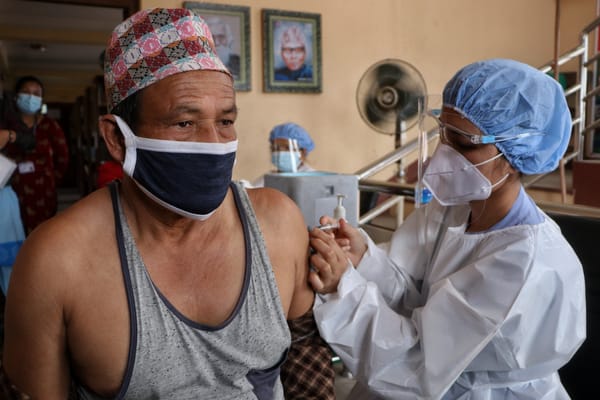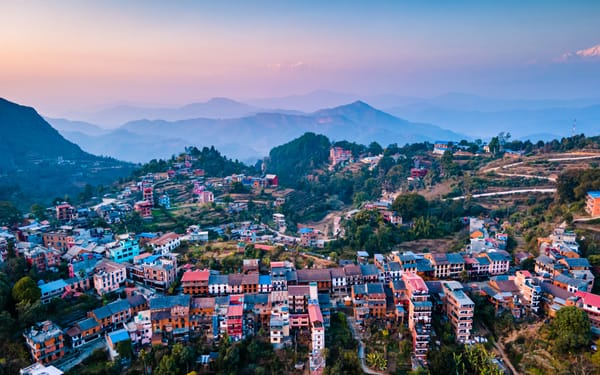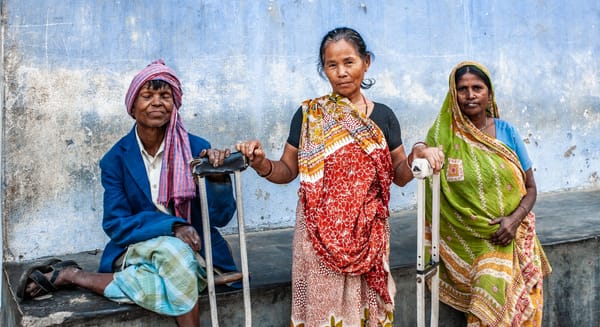Addressing Inequitable Health Care in Nepal

Maintaining a good healthcare system is a global challenge, particularly hard-hitting in low- income nations. In a third-world country like Nepal, which is riddled with socioeconomic disparity and subject to the caste system, unequal health care may not come as a surprise.
Most Nepalese patients do not receive the care and assistance they require, or may even be subjected to care that causes more harm. In most cases, assistance may be delivered too late.
Causes of healthcare disparities in Nepal
The reasons for these disparities lie in the core of what makes Nepal: its topography and its people. While this mountainous country is rich in social, cultural, and economic diversity, it presents a plethora of challenges for health equity, marked by variations across geographical locations, cultures, and infrastructures.
While there are many reasons for such inequality to prevail, here are some of the top ones.
Insufficient healthcare system:
The Constitution of Nepal has guaranteed basic healthcare as a fundamental right, but access to high-quality healthcare remains a privilege. The nation's healthcare shortcomings can be judged by the very fact that its heads of state and policymakers avail themselves of the services of its neighboring countries.
The health system in Nepal has primarily developed against the backdrop of multiple donor- driven vertical programmes over the past few decades. However, this model undermines the government's responsibility to ensure that people have access to high-quality, comprehensive healthcare.
The Ministry of Health and Population (MoHP) has adopted several quality improvement interventions, such as Minimum Service Standard (MSS), compliance with standard treatment protocols, clinical mentoring, and supportive supervision at all levels of health institutions. (1)
However, among 1565 health facilities, only 0.6% have met the minimum standards of quality of care at the point of service delivery: highest in Province 1 and none in Provinces Madhesh, Lumbini, and Karnali. Only 17.9% can perform all basic laboratory diagnostic tests.
Caste system:
After the promulgation of the National Code in 1854, the caste system has been a major determinant of Nepalese identity, social status, and life chances. Hierarchies based on one's caste resulted in some groups being held superior to others.
The disparities born since have carried themselves into present times.
Social exclusion and discrimination are rife against the Dalits, Janajatis, Muslims, and Madhesis. The population census shows that these segregated groups rank lowest in economic well-being and literacy in comparison to their 'superior' counterparts. They also ranked lowest in receiving antenatal care from a skilled birth attendant. (2)
The illiteracy, low social status, and poverty among many of these excluded groups result in higher barriers to accessing healthcare services. Social stigma and discriminatory attitudes among health service providers also discourage healthcare usage by such groups.
Across age groups, Dalit childhood mortality rates are high. Under-five mortality in this group is 90 deaths per 1,000 live births compared with an all-Nepal level of 68. The Tarai/Madhesi Other Castes also do poorly with neonatal mortality at the same level as the Dalits.
Geography:
While blessed with natural beauty, flora, and fauna, Nepal's geography challenges high-quality healthcare. Being one of the least developed nations, its infrastructure is questionable, often resulting in inadequate or delayed assistance to its patients.
In Nepal, each ward has a government-run health post and community health unit providing only primary healthcare. It refers patients to secondary health facilities when required. Such secondary health facilities have emergency services and specialized departments, but are frequently located in cities, access to which can be limited due to logistical shortcomings.In some cases, helicopters are the only means for emergency services. Specialized healthcare services in the tertiary-level facilities are mostly centered around the capital.
Further inequality assessment suggests different inequality degrees of the three levels of facilities, and the majority of inequalities were attributed to differences within provinces. Among all public facilities, only 73.4% of sanctioned MOHP positions have been filled. This is highest in public health facilities of Terai (77.9%) and lowest in the mountainous regions (50.3%). Among all facilities, only 32.2% demonstrated good storage practices of all stored medicines. (3)
Studies have shown that both geographical accessibility and equality were better under the motorised mode compared with the walking mode. If motorised transportation is available to everyone, the population coverage within 5 minutes of any public health facilities would be improved by 62.13%. (4)
Gender discrepancies:
Nepal is a male-dominated society in which men are given precedence over pertinent matters such as education, generational wealth, and healthcare. Until the increase in female literacy and the emergence of women’s credit and savings over the last 20 to 30 years, women in most communities had a minimal role beyond their family and household maintenance.
The Nepal Health Facility Survey (NHFS) 2021, which assessed the availability and quality of health services in the country, found that in some regions, less than half of the population had access to basic healthcare services, such as antenatal care, skilled birth attendance, and immunization services. It also found that women have less access to contraceptive devices and are not always able to plan their families.
The vast majority of births still take place at home in Nepal. Only 18 percent of births are delivered in a health facility. In terms of who receives antenatal care from a skilled birth attendant of some type, Muslim (32 percent) and Indigenous women (35 percent) have the lowest percentages.
In 2004, the government initiated the Maternal Incentive Scheme (MIS), which offers incentive payments to women who deliver in a health facility, and to health workers who attend deliveries at home or in health institutions. (5)
A study in 10 districts (SSMP/Nepal, 2007) found that the scheme is beginning to work, especially in getting health workers to attend home deliveries. However, it has been less successful in getting women into health facilities, partly due to problems with funding and procedures for reimbursing these facilities.
To conclude, while such disparities still exist, it's not all bad news moving forward. Nepal has achieved remarkable progress in improving its health status during the last two decades. Following the ten-year insurgency, it has been able to dramatically reduce maternal mortality (from 540 maternal deaths to 281 per 100,000 live births) over the past 15 years.
By focusing on the marginalized communities, especially the Dalits and the Muslims, the healthcare system can be better accessed. Reaching these groups may require more investment and effort, but it can forge the way ahead for equal healthcare facilities for all.



